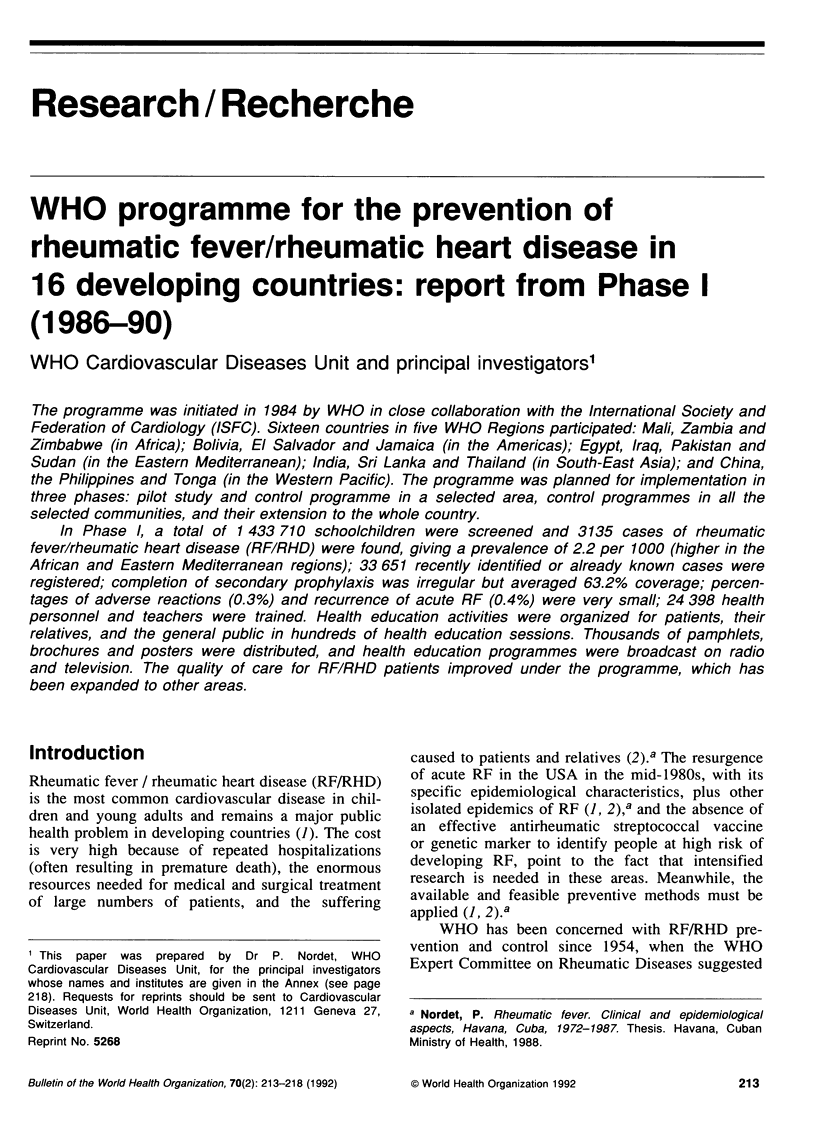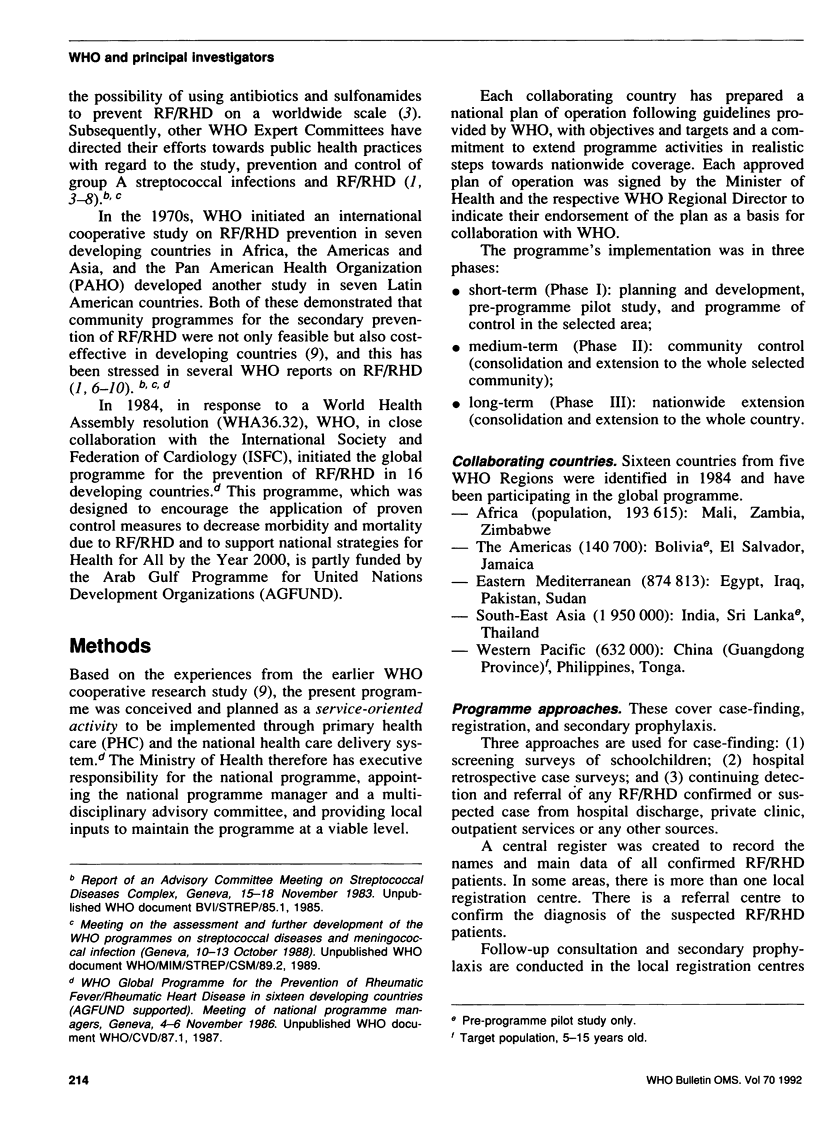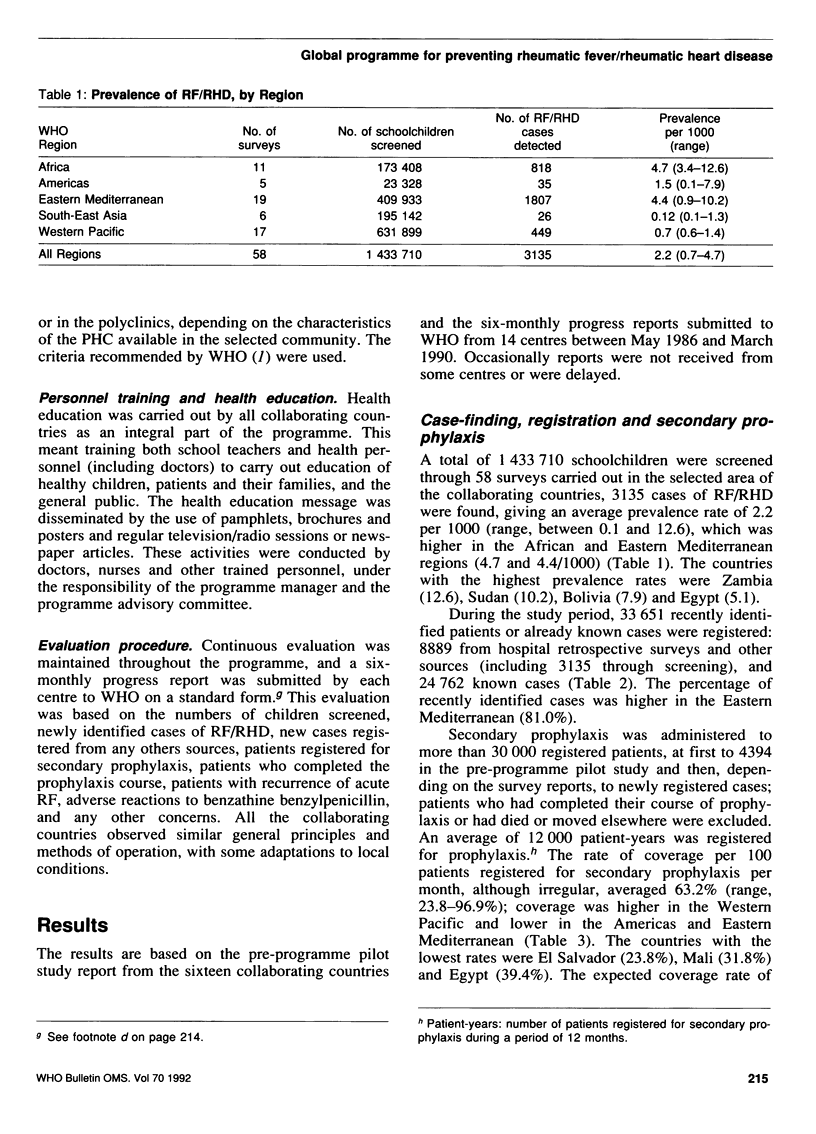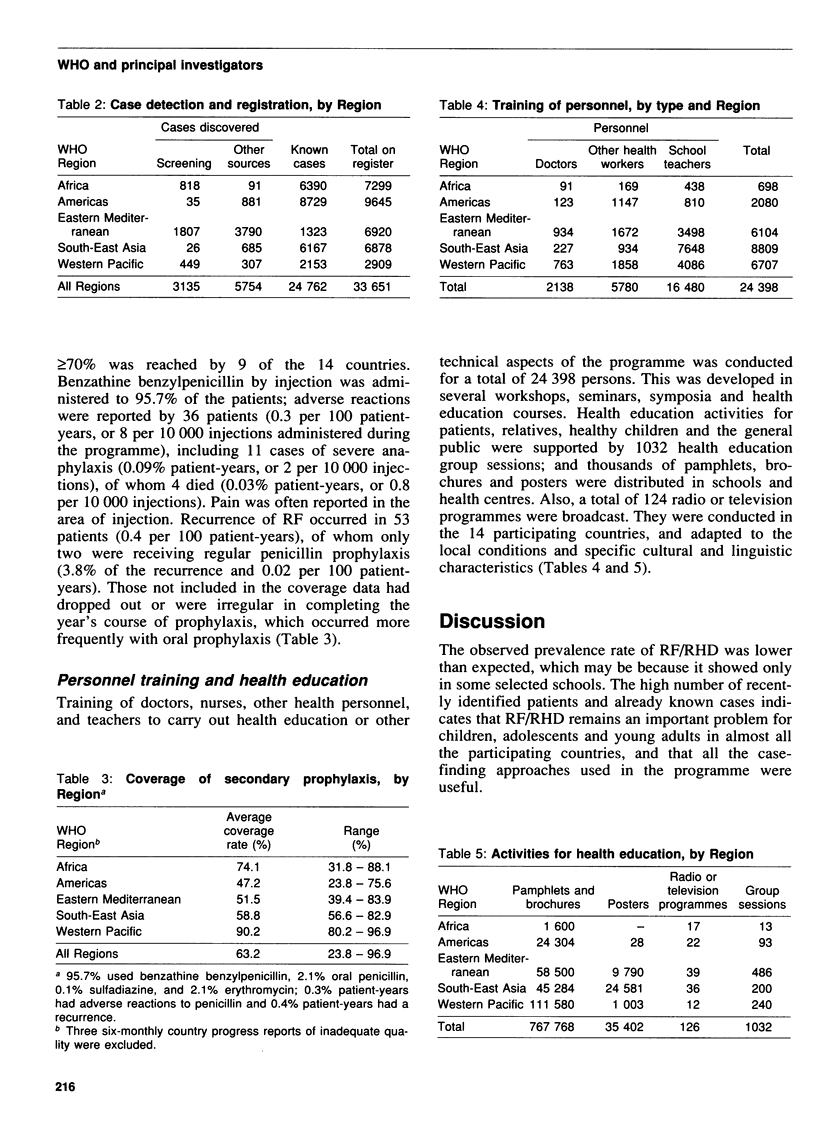Abstract
The programme was initiated in 1984 by WHO in close collaboration with the International Society and Federation of Cardiology (ISFC). Sixteen countries in five WHO Regions participated: Mali, Zambia and Zimbabwe (in Africa); Bolivia, El Salvador and Jamaica (in the Americas); Egypt, Iraq, Pakistan and Sudan (in the Eastern Mediterranean); India, Sri Lanka and Thailand (in South-East Asia); and China, the Philippines and Tonga (in the Western Pacific). The programme was planned for implementation in three phases: pilot study and control programme in a selected area, control programmes in all the selected communities, and their extension to the whole country. In Phase I, a total of 1,433,710 schoolchildren were screened and 3135 cases of rheumatic fever/rheumatic heart disease (RF/RHD) were found, giving a prevalence of 2.2 per 1000 (higher in the African and Eastern Mediterranean regions); 33,651 recently identified or already known cases were registered; completion of secondary prophylaxis was irregular but averaged 63.2% coverage; percentages of adverse reactions (0.3%) and recurrence of acute RF (0.4%) were very small; 24,398 health personnel and teachers were trained. Health education activities were organized for patients, their relatives, and the general public in hundreds of health education sessions. Thousands of pamphlets, brochures and posters were distributed, and health education programmes were broadcast on radio and television. The quality of care for RF/RHD patients improved under the programme, which has been expanded to other areas.
Full text
PDF





Selected References
These references are in PubMed. This may not be the complete list of references from this article.
- Gordis L. Effectiveness of comprehensive-care programs in preventing rheumatic fever. N Engl J Med. 1973 Aug 16;289(7):331–335. doi: 10.1056/NEJM197308162890701. [DOI] [PubMed] [Google Scholar]
- Graff-Lonnevig V., Hedlin G., Lindfors A. Penicillin allergy--a rare paediatric condition? Arch Dis Child. 1988 Nov;63(11):1342–1346. doi: 10.1136/adc.63.11.1342. [DOI] [PMC free article] [PubMed] [Google Scholar]
- Majeed H. A., Yousof A. M., Khuffash F. A., Yusuf A. R., Farwana S., Khan N. The natural history of acute rheumatic fever in Kuwait: a prospective six year follow-up report. J Chronic Dis. 1986;39(5):361–369. doi: 10.1016/0021-9681(86)90122-0. [DOI] [PubMed] [Google Scholar]


